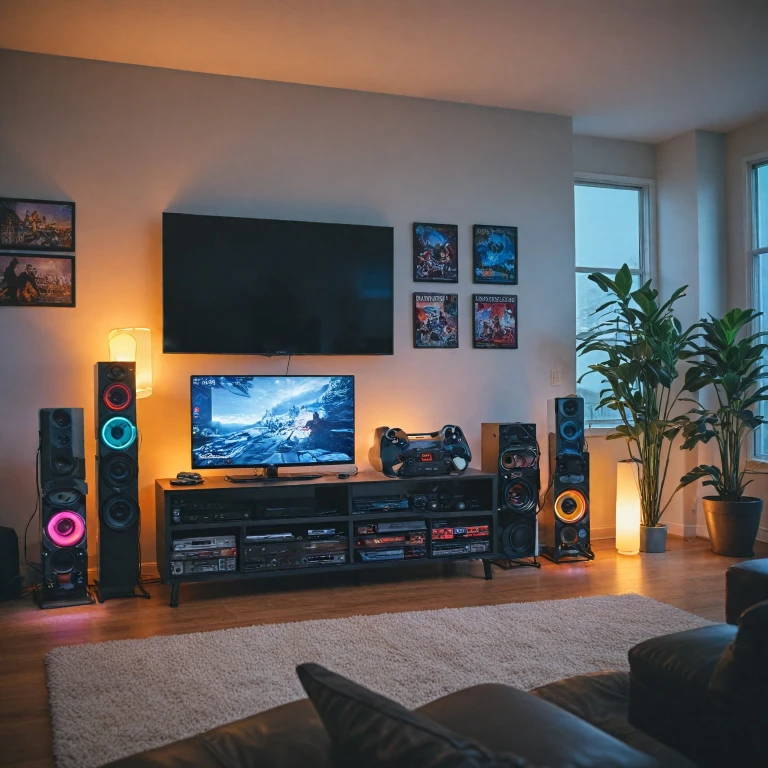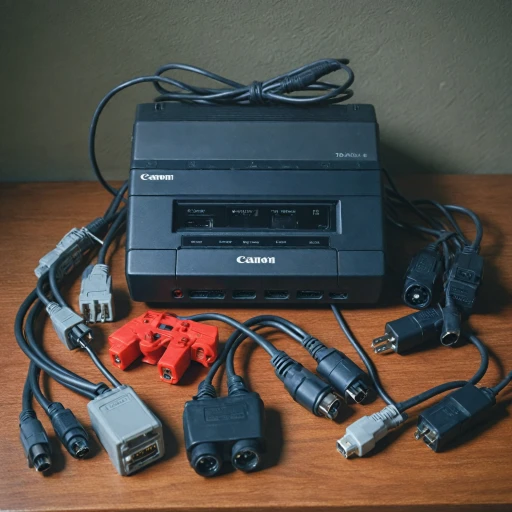
Understanding the Switch Panel
Grasping the Mechanics of the Switch Panel
The switch panel is an integral component within the realm of gaming consoles, offering both functionality and customization to users. Its importance cannot be overstated as it delivers a seamless interface for various operations, from system ignition to managing fuel pumps in racing games. To get started, the basics must be understood. A switch panel typically includes electrical switches such as rocker switches and push buttons. Additionally, control panels provide centralized management of different systems, which can range from simple ignition controls to more complex setups involving circuit breakers and control panel power distributions. Switch panels have transformed over the years, evolving from basic on-off switches to sophisticated, custom configurations that cater to gaming enthusiasts' desires for a personalized experience. In today's consoles, the panels are often equipped with racing switches for precise control or ship panel controls for simulation games. Rocker switches, available in black and white, are frequently used due to their ease of use and durability. Additionally, custom switch panels allow gamers to personalize their setups according to their preferences, adding an estimated level of control that enhances gameplay. Today's switch panels offer flexibility with mount options suitable for various environments, including roll cages in racing setups. This versatility enables gamers in the United States and beyond to elevate their gaming experiences significantly. To explore future developments and what's on the horizon for these systems, check out the next switch console marketing insights.The Evolution of Switch Panels
The Development Journey of Switch Panels in Consoles
The evolution of switch panels in gaming consoles is a testament to the progressing technology and changing user demands. Initially, the simplicity of control panels doubled as a functional necessity, providing basic system controls, such as power on/off and reset. However, the landscape has dramatically transformed into a more sophisticated assembly. In the early days, switch panels were unassuming with mechanical rocker switches and basic push buttons. With the rise of racing games, more intuitive racing switch panels emerged, incorporating features like ignition and fuel controls, reminiscent of a racing car dashboard. Today, panels switch between more complex tasks and products, nearing what would be seen in more technically demanding environments, such as ship control systems. The customization trend significantly impacted switch panels. The emergence of custom switch panels brought a shift from standardized setups. Gamers began to demand tailored experiences that aligned with personal preferences, prompting manufacturers to add modules for unique settings. The use of varieties such as the switchpanel mini illustrates this, enabling intricate combinations of electrical switches and push buttons, mounted to fit individual needs. The introduction of black and white designs reflects the modern aesthetic sought by many consumers. This evolution's effect is evident even in the development of privacy policies and user interface, as control panels now offer seamless integration with existing console systems while maintaining the visual appeal to match any gaming setup. As the industry continues advancing, switch panels are expected to adapt further, driven by technological innovations and user feedback. Thus, they remain a cornerstone to enhancing the interactivity and functionality of gaming consoles. For those interested in exploring the iconic Nintendo Switch, you may find valuable insight by delving into exploring the magic of Paper Mario on Nintendo Switch.Switch Panel Features and Benefits
Distinct Capabilities and Advantages of Switch Panels
Switch panels, essential components within gaming consoles, serve as crucial interfaces facilitating user control. These systems are often integrated into consoles to enhance user experience, ensuring gamers have quick and efficient access to console functions. The innovation in switch panel technology reflects this demand for seamless interaction, providing benefits that extend to both the casual and professional gaming arenas.
The design and implementation of modern switch panels focus heavily on adaptability. The modular nature allows for customizations, catering to a wide range of gaming preferences and functional needs. A typical advantage includes the ability to add custom switch components like rocker switches or push buttons, which are vital for racing games demanding immediate actions.
Functionality is another critical facet. Some gaming systems incorporate switch panels with sophisticated features like electrical switch control, additional circuit breaker capabilities, and precision toggle switches. These allow users to tailor their experience, from adjusting systems like ignition or fuel management, to activating specific game modes with a single touch.
Moreover, the onboard control panels can improve console longevity. Devices that integrate advanced control systems, including those capable of handling multiple fuel pumps or managing power distribution, benefit from better efficiency and reduced wear on internal components. This effectively minimizes the potential for system failure or downtime, thus enhancing overall gameplay.
The aesthetic appeal is not overlooked. Modern switch panels are available in various styles and colors, like the popular black and white designs, providing gamers with both functionality and style. They can be mounted on different parts of the console, including the roll cage areas in advanced gaming setups, further personalizing the user's gaming environment.
Overall, switch panels represent a perfect blend of practicality and customization, essential in today’s gaming landscapes. By delivering intuitive control alongside robust performance, these panels are a vital component of the gaming systems, underscoring their importance in enhancing both playability and gamer satisfaction.
Challenges in Switch Panel Design
Overcoming Design Hurdles
Designing switch panels for gaming consoles is no easy task. Manufacturers must tackle several challenges to create an effective control panel that enhances user experience and meets gaming demands. From aesthetics to functionality, let's delve into some of the complications in switch panel design.The primary challenge involves integrating multiple switches into a compact form without compromising on performance. With gamers seeking a seamless and immersive experience, this requires meticulous planning to ensure every panel element, from rocker switches to push buttons, is accessible and intuitive.
Durability is another crucial factor, especially for racing switch panels. These panels must withstand constant pressure, ensuring that control systems like ignition and fuel pumps can operate without fault. Utilizing robust materials such as durable plastics or metals, often in shades of white or black, designers work to embed strong structural integrity.
Customization adds another layer of complexity. Today, gamers prefer panels that cater to their specific gaming styles and setups, such as a roll cage mount. This means designing custom switch panels that can easily adapt to varied console systems, whether fixed or portable. Devices like the switchpanel mini offer flexibility, but also demand precise engineering to allow for custom configurations.
Simplifying panel installation is equally important. Whether in the United States or internationally, users should be able to integrate their switch panels as seamlessly as adding items to a cart in an online store. Designers are tasked with creating panels that easily mount to different gaming systems without necessitating intricate wiring or additional tools.
Lastly, power management remains a concern. Efficiently distributing panel power while incorporating components such as circuit breakers and electrical switch systems helps prevent faults during gameplay. Balancing the need for power and privacy policy compliance is a staple hurdle in creating reliable control panels.
Confronting these challenges calls for innovation and precision, as technology continues to evolve. As we further explore switch panels' versatility, understanding these design complexities can provide insight into their growing importance in the gaming world.
Comparing Switch Panels Across Consoles
Comparative Analysis of Gaming Console Switch Panels
When comparing switch panels across different gaming consoles, it's essential to recognize the critical elements that distinguish one from the other. While customization and versatility are highly valued, the execution of these features can vary significantly.
One of the primary considerations is the type of controls the switch panel offers. Some consoles favor traditional rocker switches, while others opt for more modern, sleek push buttons. Both styles have their advantages; rocker switches can provide a tactile feel that's satisfying for users, and push buttons can contribute to a seamless, modern design.
In terms of functionality, switch panels today often incorporate customizable options that allow users to tailor their control systems to their liking. This might include the ability to configure control panel settings for various power sources, such as ignition systems or fuel pumps in gaming scenarios that simulate real-world racing environments.
The physical design and materials also differ. Some use a mix of black and white finishes to add aesthetic appeal, while others offer options to accommodate different gaming setups, including integration with a roll cage for racing simulators.
- Mounting Flexibility: The ability to mount the switch panel securely on various surfaces is critical, particularly in intricate gaming setups.
- Durability and Safety: Features like built-in circuit breakers ensure safety by preventing electrical overloads, which is vital for protecting gaming equipment.
- Privacy Considerations: With many devices connected, a reliable privacy policy will reassure users that their data remains confidential.
Moreover, differences arise in how companies address design challenges. Some provide more focus on the panel power distribution aspects, while others emphasize the aesthetic appeal or ergonomics. These variations often reflect the target audience of a particular system, whether it be the general consumer, a niche market like racing enthusiasts, or professional users seeking a robust control panel system.
Each brand's unique approach to switch panel technology exemplifies a commitment to delivering a seamless experience tailored to diverse gamer preferences. The choice between different console switch panels will largely depend on the specific needs of the player, the intended use-case scenarios, and preferred interaction modes.












